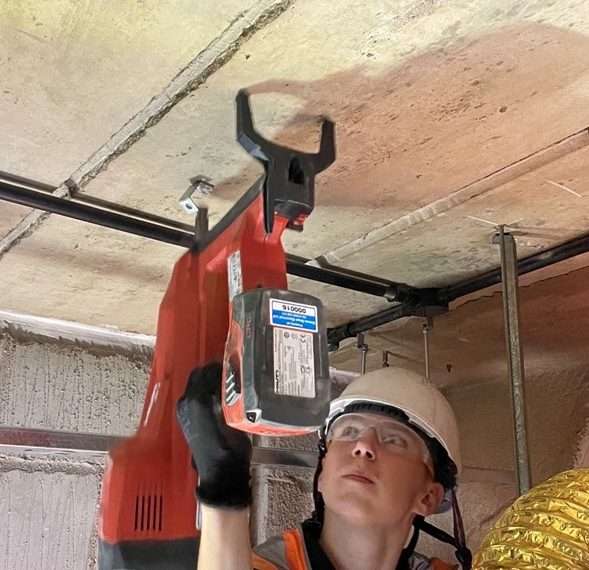Liverpool Lime Street Station is a crucial hub for both regional and national rail services. A significant upgrade to its outdated and malfunctioning analogue fire alarm system was required. The original system had undergone numerous modifications, leading to frequent faults that posed a risk to the station’s operations and safety. In response, a new fire alarm system was designed that complied with BS5839 standards, which ensures comprehensive fire detection in commercial and public premises. Simon Dean was selected for the installation of this system, delivering a fully compliant and modern automatic fire detection network.
Several challenges to the project were apparent due to the complex and dynamic nature of the station’s environment. Lime Street Station operates 24/7, serving thousands of commuters daily. As a result, the installation had to be planned and executed with minimal disruption to train services and retail operations.
The project required continuous liaison with retail unit operators, train operating companies, and station staff to coordinate the works on a daily basis. With the station’s busy environment and ongoing operations, mitigating health and safety risks while maintaining construction efficiency was crucial throughout the fire alarm rewire.
Planning and Preparation:
The project commenced with detailed planning meetings between Simon Dean, Network Rail, and key stakeholders. These meetings allowed the project team to outline the scope of the works, assess the technical challenges, and develop a strategy to minimize disruption to station activities.
As part of the planning phase, Simon Dean implemented full site welfare measures, ensuring that all personnel had access to the necessary facilities and resources. This commitment to site welfare contributed to maintaining a high standard of safety and efficiency throughout the installation.
Installation Process:
- Containment Systems: Complete new containment systems were installed above ceilings, within risers and basement areas to ensure all new cables were mechanically protected and secure.
- Cable Installation: Over 2.5 km of FP200 fire-resistant cable was installed, ensuring the system could function reliably even in extreme conditions. This extensive network supported over 350 fire alarm accessories, including detectors, call points, and sounders.
- Shift Coordination: To minimize disruption to the station’s operations, works were carried out during day and night shifts utilising multiple installation teams. Simon Dean maintained close communication with the various stakeholders, adjusting work schedules to accommodate station events, retail operations and peak passenger periods.
- Modern Techniques: Construction efficiency was significantly enhanced through the use of modern tools and techniques, such as the Stut cutter and direct fixing gun. These innovations reduced installation time and mitigated safety risks by eliminating the need for more dangerous and labour-intensive methods.
Conclusion:
Regular construction reviews were conducted to monitor progress, address challenges, and implement any necessary changes. The new fire alarm system delivered by Simon Dean was fully compliant with BS5839 standards, providing the station with a modern, reliable, and automatic fire detection system. Simon Dean’s commitment to safety, efficiency, and compliance ensured that the station now benefits from a robust fire detection system capable of protecting both staff and passengers for years to come.


